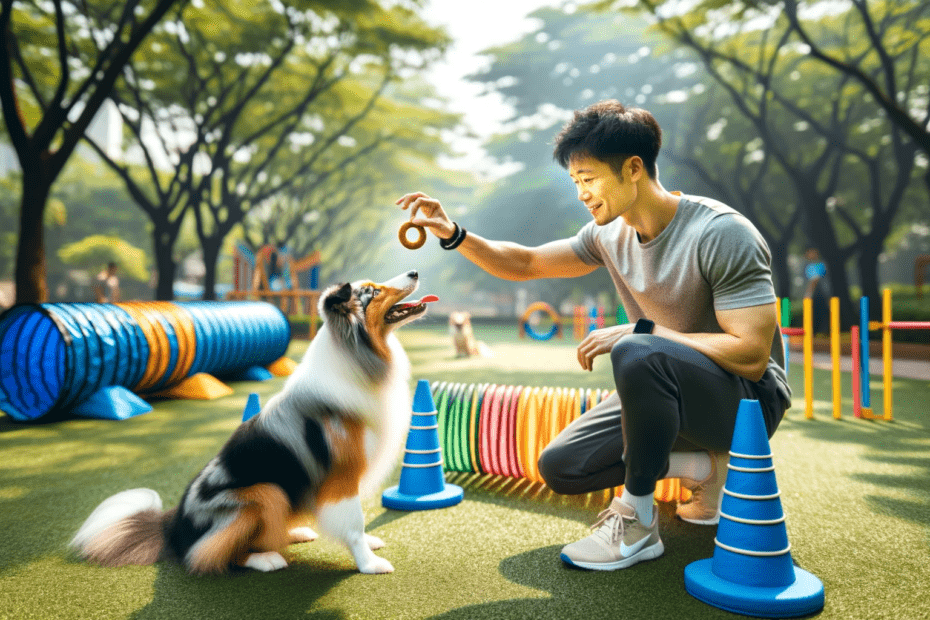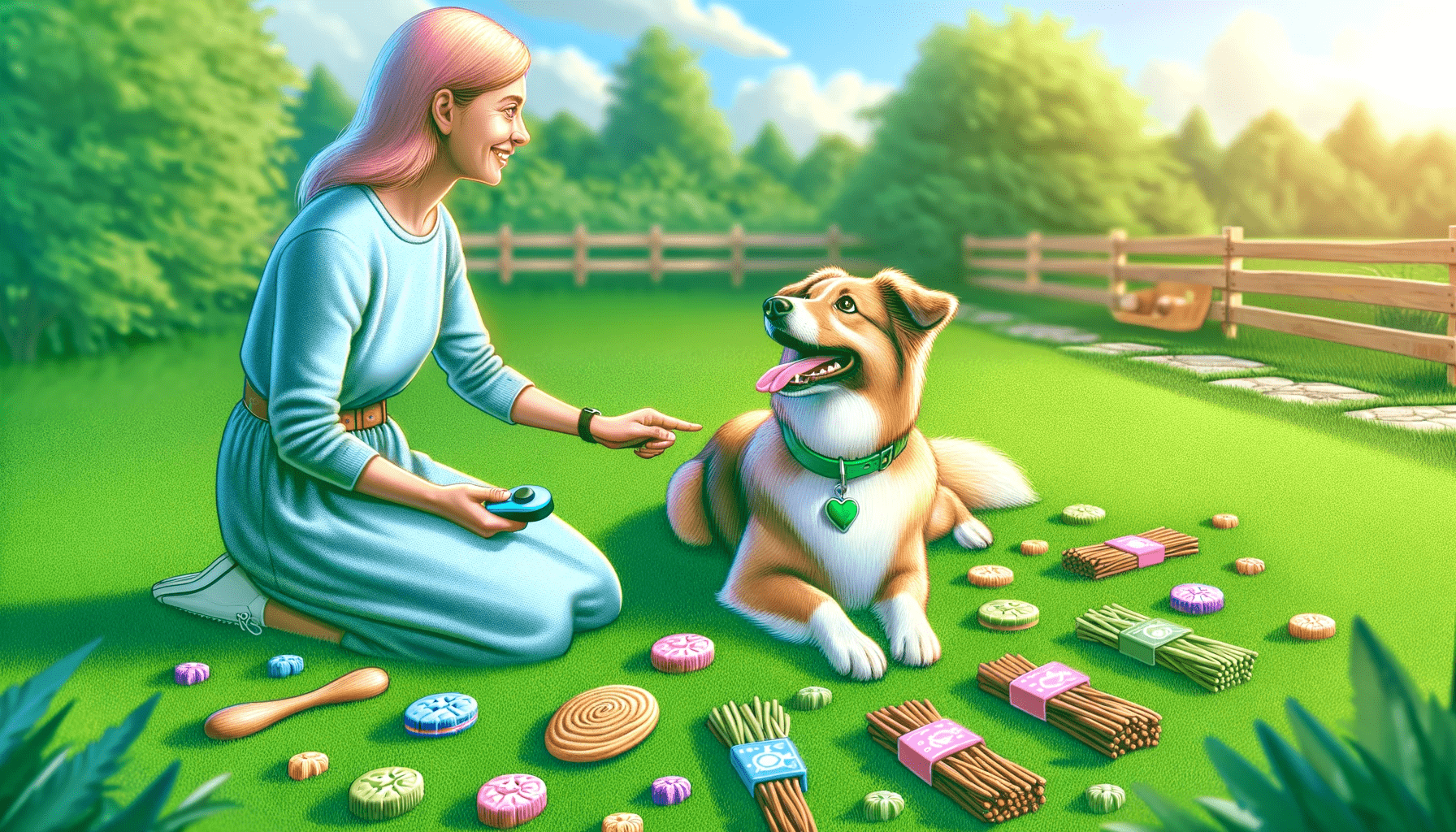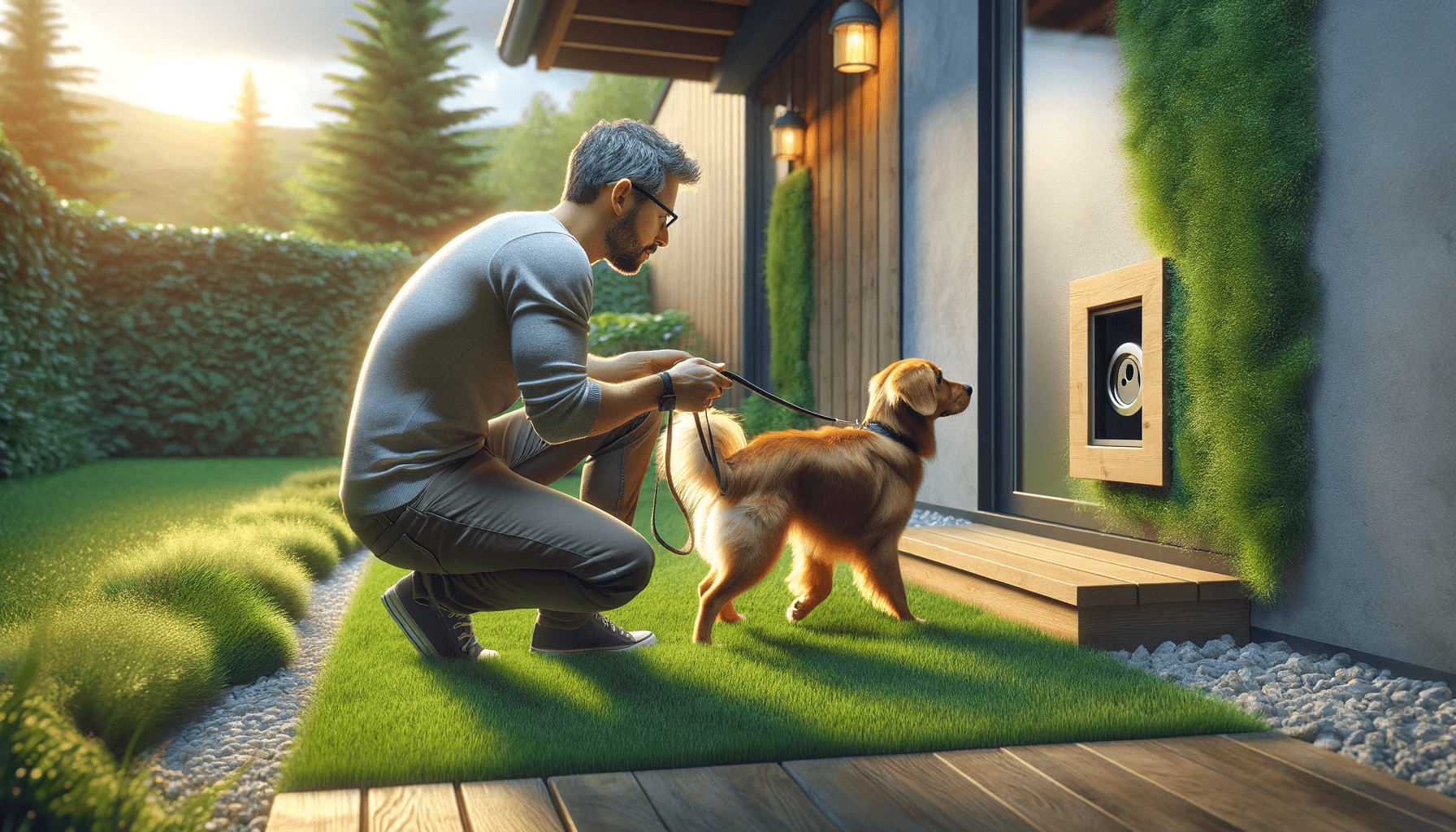Are you ready to unleash your dog's inner genius? Look no further! In this article, we'll share 5 expert tips to help you master smart dog trick training.
From choosing the right tricks to establishing clear communication, we've got you covered. Get ready to be amazed as you discover reward-based training methods that will have your furry friend performing like a pro.
With consistency, patience, and building on basic commands, you'll be on your way to creating a bond with your clever canine like never before.
Let's get started!
Key Takeaways
- Consider your dog's abilities, preferences, and training goals when selecting tricks
- Use consistent cues and commands, including non-verbal cues, to establish clear communication with your dog
- Utilize reward-based training methods, such as positive reinforcement and clicker training, to create a positive learning experience
- Be consistent, patient, and celebrate small victories while building on basic commands to teach advanced tricks
Choosing the Right Tricks
To choose the right tricks for your smart dog, consider their abilities, preferences, and your training goals. The trick selection process is crucial in ensuring that your dog learns and performs tricks that are suitable for their skill level and interests. Before you begin training, take some time to observe your dog and assess their capabilities. Are they naturally agile or more inclined towards problem-solving? This will help you determine the types of tricks that would best align with their strengths.
Additionally, consider your training goals. Are you looking to impress friends and family with complex tricks or simply want to engage your dog in mentally stimulating activities? Understanding your objectives will guide you in selecting tricks that align with your desired outcomes.
Once you have identified your dog's abilities and training goals, you can start incorporating advanced trick training techniques. These techniques involve breaking down complex tricks into smaller, manageable steps. By using positive reinforcement and reward-based training, you can gradually build up your dog's skills and confidence. Remember to be patient and consistent in your training approach, as mastering advanced tricks may take time and practice.
Establishing Clear Communication
Start by establishing clear communication with your smart dog through consistent cues and commands. Non-verbal cues can be just as important as verbal commands when training your dog. Dogs are highly observant and responsive to body language, so use visual signals such as hand gestures or facial expressions to accompany your verbal commands. This will help your dog understand what you want them to do and reinforce the desired behavior.
Consistency is key when it comes to communication. Use the same cues and commands consistently to avoid confusion. For example, if you want your dog to sit, use the same hand gesture and verbal command every time. This will help your dog associate the cue with the desired behavior and make it easier for them to understand what you want.
Reinforcing desired behavior is crucial in establishing clear communication with your dog. Use positive reinforcement, such as treats, praise, or play, to reward your dog when they perform the desired behavior. This will motivate them to repeat the behavior in the future.
Remember to be patient and consistent in your training. Clear communication won't happen overnight, but with time and practice, your smart dog will understand and respond to your cues and commands effectively.
Reward-Based Training Methods
How can you effectively train your smart dog using reward-based methods?
Positive reinforcement techniques and clicker training methods are two effective approaches that can help you achieve this goal.
Positive reinforcement techniques involve rewarding your dog for exhibiting the desired behavior. This can be done through treats, praise, or play. For example, if you're teaching your dog to sit, you can give them a treat every time they successfully sit on command. This positive association will encourage them to repeat the behavior in the future.
Clicker training is another effective reward-based method. It involves using a clicker to mark the exact moment your dog performs the desired behavior, followed by a reward. The clicker serves as a clear signal to your dog that they've done something right.
Both positive reinforcement techniques and clicker training methods work by creating a positive and enjoyable learning experience for your dog. By using rewards, you motivate your dog to actively participate in the training process and to seek out opportunities to perform the desired behaviors.
Remember to be consistent and patient during the training process. With time and practice, your smart dog will learn and excel in various tricks and commands using these reward-based training methods.
Consistency and Patience
Stay consistent and patient when training your smart dog.
Consistency is key when it comes to teaching your dog new tricks. Establish a training schedule and stick to it. Dogs thrive on routine, so having a set time each day for training will help them understand what's expected of them. This will also help you stay organized and focused during training sessions.
In addition to consistency, using positive reinforcement techniques is crucial. Dogs respond well to rewards and praise when they perform the desired behavior. This means offering treats, verbal praise, and even physical affection when they successfully complete a trick or command. By rewarding your dog for their efforts, you're reinforcing the behavior and encouraging them to continue to learn and improve.
However, it's important to remember that training takes time and patience. Dogs, especially smart ones, can pick up on cues and commands quickly, but they still need time to fully grasp and master each trick. Be patient and understanding, and avoid getting frustrated or discouraged. Celebrate small victories along the way and remember that every step forward is progress.
With consistency and patience, your smart dog will be performing tricks like a pro in no time.
Building on Basic Commands
Once your smart dog has mastered basic commands, you can begin building on their skills. Building on basic commands involves teaching your dog advanced tricks and shaping their behavior to perform more complex tasks.
Advanced tricks can include activities like fetching specific objects, jumping through hoops, or even playing dead. To teach these tricks, you can use a technique called shaping behavior. This involves breaking down the desired behavior into smaller steps and rewarding your dog for each successful attempt.
For example, if you want to teach your dog to fetch a specific object, you can start by rewarding them for simply touching the object, then for picking it up, and finally for bringing it back to you. By breaking down the trick into small achievable steps, you can gradually shape your dog's behavior until they can perform the entire trick.
Remember to be patient and consistent during this process. With practice and positive reinforcement, your smart dog will be able to learn and perform advanced tricks with ease.
Frequently Asked Questions
Can I Teach My Dog Any Trick or Are There Specific Tricks That Are Better Suited for Training?
You can teach your dog any trick, but some tricks may be better suited for training. Different types of tricks, such as obedience, agility, and scent work, offer various benefits. To keep your dog motivated during training, use positive reinforcement and break down the trick into smaller steps.
How Long Does It Usually Take to Train a Dog to Perform a Trick?
Training a dog to perform a trick usually takes time and consistency. By using effective strategies for trick training, such as positive reinforcement and breaking down the trick into smaller steps, you can overcome common training challenges.
Is It Necessary to Use Treats as Rewards During Training or Are There Other Options?
Using alternative rewards for dog training is not necessary, but there are different methods of positive reinforcement you can try. Treats are often effective, but you could also use praise, toys, or playtime as rewards.
What Should I Do if My Dog Is Not Responding to the Training Methods Mentioned?
If your dog is not responding to the mentioned training methods, don't worry! There are alternative training methods you can try. However, if you're still struggling, seeking professional help from a dog trainer or behaviorist is a great option.
Can I Train My Dog to Perform Tricks if They Are Already Older and Have Not Received Any Previous Training?
Yes, older dogs can learn new tricks! It's never too late to start training. To motivate your dog during training, use positive reinforcement like treats or praise. Consistency and patience are key.
Conclusion
In conclusion, when it comes to smart dog trick training, it's important to:
- Choose the right tricks
- Establish clear communication
- Use reward-based training methods
- Be consistent and patient
- Build on basic commands
By following these expert tips, you can effectively train your dog to perform impressive tricks and strengthen the bond between you and your furry companion.
Remember to always approach training with a positive and patient attitude for the best results.






